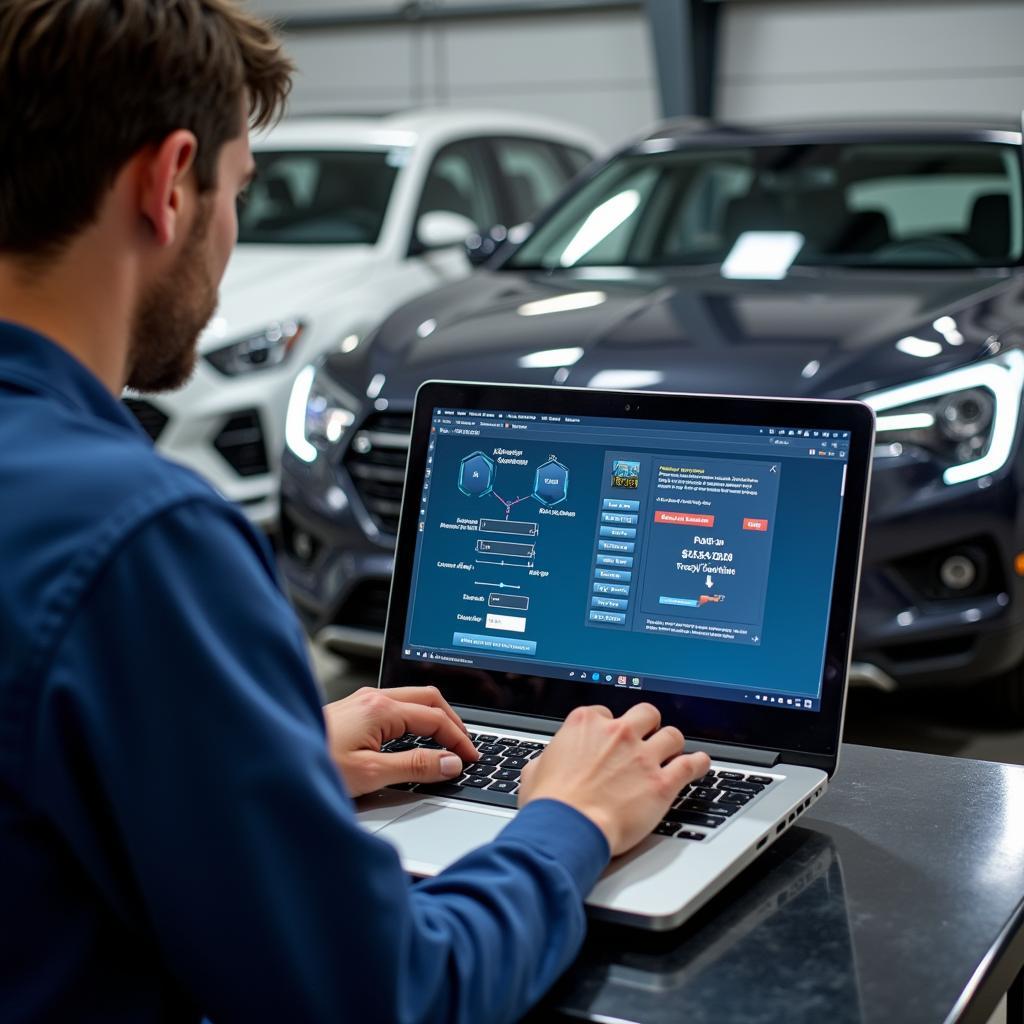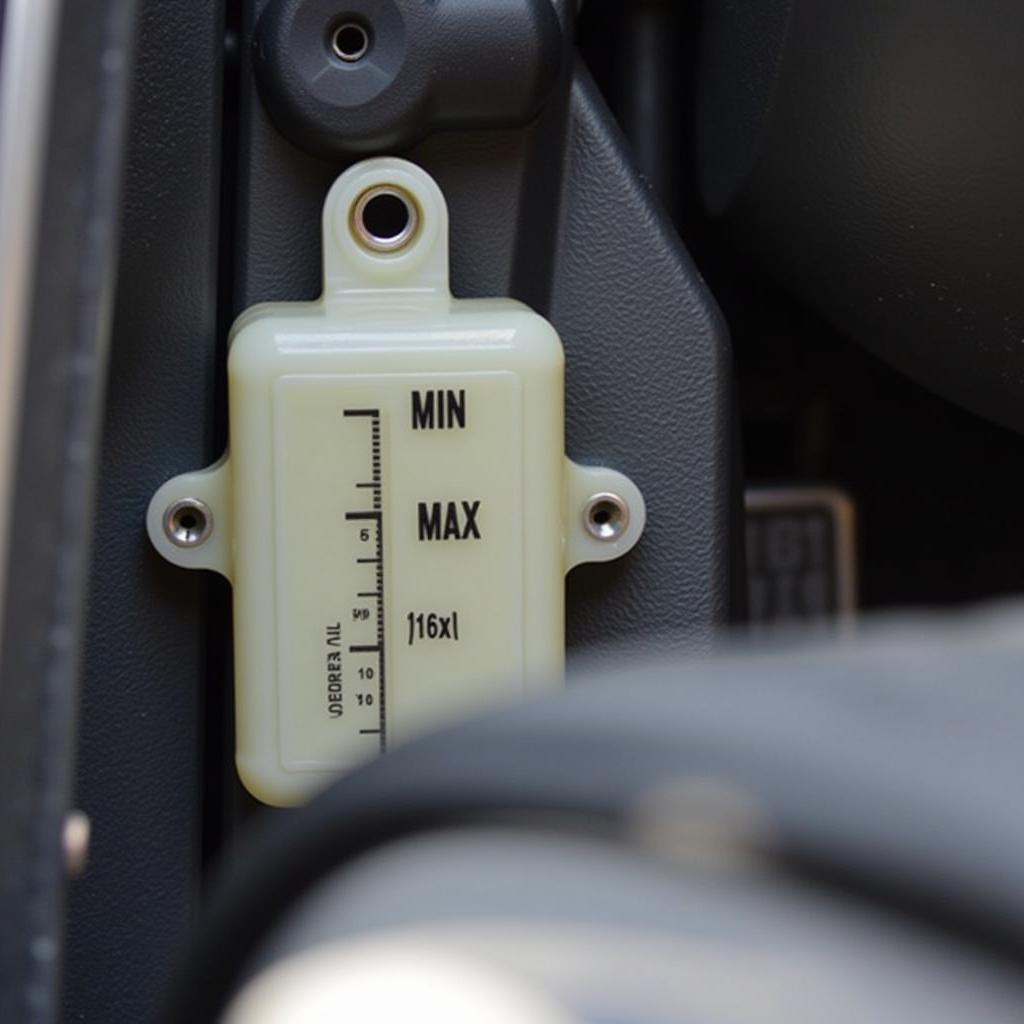Seeing your battery light, oil light, and engine light illuminated on your dashboard can be a nerve-wracking experience. It’s a clear signal that something isn’t right with your car, and ignoring these warnings could lead to costly repairs down the line. This article will help you understand the possible causes behind these illuminated lights and guide you through some troubleshooting steps.
Understanding the Warning Lights
Each of these dashboard lights represents a different system in your car. The battery light indicates a problem with the charging system, meaning your alternator may not be properly charging the battery. The oil light signals low oil pressure, a critical issue that can damage your engine. Lastly, the engine light, often referred to as the check engine light, is a more general warning that can indicate anything from a loose gas cap to a serious engine malfunction. Having all three lights on simultaneously can suggest a few interconnected problems, potentially stemming from a failing alternator, a serious oil leak, or a faulty sensor.
Common Causes of All Three Lights Illuminating
Failing Alternator
A failing alternator is a common culprit when all three lights illuminate simultaneously. The alternator is responsible for charging the battery and powering the electrical systems while the engine is running. If the alternator fails, the battery will eventually drain, leading to low voltage which can trigger the oil and engine lights. This is because the oil pump and various engine sensors rely on electricity to function properly.
Serious Oil Leak
A significant oil leak can cause a drastic drop in oil pressure, triggering the oil light. Low oil pressure can also lead to increased engine friction and heat, potentially triggering the engine light. If the oil leak is severe enough to affect engine performance, it could indirectly impact the charging system, triggering the battery light as well.
Faulty Sensor
While less common, a faulty sensor, especially the crankshaft position sensor or oil pressure sensor, can cause all three lights to come on. These sensors provide crucial information to the engine control unit (ECU). Incorrect readings from these sensors can trigger a cascade of warnings, illuminating multiple dashboard lights, even if there isn’t a significant underlying problem.
Troubleshooting Steps
Check the Battery and Alternator
Start by checking the battery terminals for corrosion or loose connections. Clean the terminals and tighten them if necessary. Next, have the alternator tested. A simple voltage test can reveal whether it’s charging properly.
Check the Oil Level
Check the engine oil level using the dipstick. If the level is low, add oil as needed. If the oil light remains on, there could be a leak or a problem with the oil pump.
Inspect for Leaks
Look for visible oil leaks under the car or around the engine. A significant leak should be addressed immediately by a mechanic.
Check the Gas Cap
A loose or damaged gas cap can sometimes trigger the engine light. Ensure the gas cap is securely tightened.
Scan for Trouble Codes
Use an OBD-II scanner to retrieve trouble codes from the ECU. These codes can pinpoint the specific area of concern and help diagnose the problem.
When to Seek Professional Help
If you’ve tried basic troubleshooting steps and the lights remain on, or if you’re uncomfortable working on your car, it’s crucial to seek professional help. Ignoring these warning lights can lead to serious engine damage and costly repairs.
“Don’t delay seeking professional help,” says John Miller, a certified automotive technician with over 20 years of experience. “A seemingly minor issue can quickly escalate into a major problem if left unattended. Early diagnosis can save you time and money in the long run.”
Remote Diagnostics and Software Solutions
In today’s advanced automotive landscape, remote diagnostics and software solutions play a crucial role in addressing vehicle issues. By utilizing specialized software, trained technicians can remotely access your car’s ECU, retrieve diagnostic data, and even reprogram certain modules. This innovative approach can often resolve software-related issues without the need for a physical visit to a repair shop.
 Mechanic using a laptop to perform remote diagnostics on a car
Mechanic using a laptop to perform remote diagnostics on a car
Conclusion
Having your battery light, oil light, and engine light on simultaneously is a serious matter that shouldn’t be ignored. By understanding the potential causes and following the troubleshooting steps outlined in this article, you can take the first steps toward resolving the issue. However, remember that seeking professional help is often the best course of action, especially if the problem persists. Don’t wait until a minor issue turns into a major headache. Address the problem promptly to keep your car running smoothly.
“Regular maintenance and prompt attention to warning signs are crucial for extending the life of your vehicle,” adds Sarah Johnson, an automotive electrical engineer. “Addressing these issues early on can prevent costly repairs down the line.”
FAQ
-
What should I do if all three lights come on while driving? Safely pull over to the side of the road and assess the situation. Check the oil level and inspect for leaks. If the problem seems serious, call for roadside assistance.
-
Can a bad battery cause all three lights to come on? While a failing battery itself might not directly cause all three lights to come on, a related issue like a failing alternator, which is responsible for charging the battery, can trigger the other warning lights.
-
Is it safe to drive with these lights illuminated? No, it’s generally not safe to drive with these lights on. It indicates a potential problem that could worsen and cause further damage or even create a dangerous driving situation.
-
How much does it cost to fix these issues? The cost of repairs varies depending on the underlying cause. A simple fix like a loose gas cap might cost nothing, while a major engine repair could be significantly more expensive.
-
Can I fix these issues myself? Some basic troubleshooting, like checking the oil level and gas cap, can be done at home. However, more complex issues require professional expertise and specialized tools.
-
How can remote diagnostics help with these issues? Remote diagnostics can help identify software-related problems and potentially resolve them without a physical visit to the mechanic. This can be particularly helpful for diagnosing sensor issues or ECU malfunctions.
-
What is the most common cause of these three lights illuminating together? A failing alternator is often the most common culprit when all three lights come on simultaneously.

